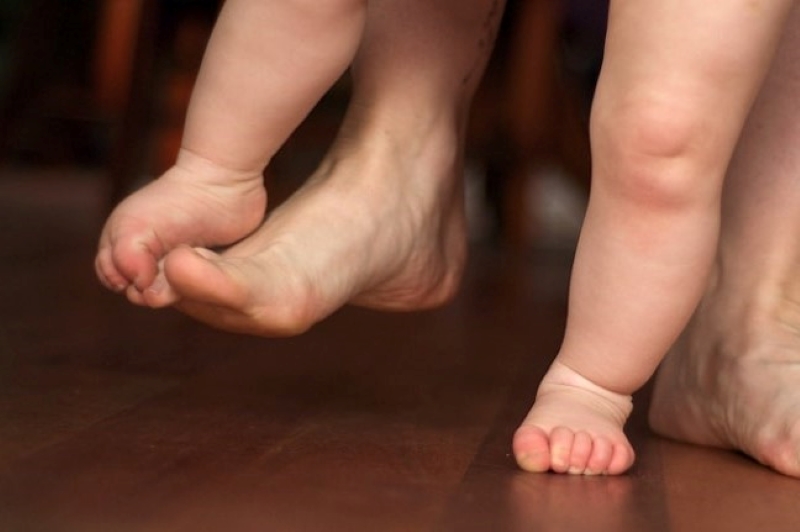
Congenital malformations: the discoid meniscus in children and adolescents
Discoid meniscus is a congenital malformation of the meniscus, which is disc-shaped. If symptomatic, it requires surgical treatment under arthroscopy
The menisci are two small crescent-shaped fibro-cartilaginous structures that, in the knee, act as cushions or shock absorbers, being located between the lower end of the femur and the upper end of the tibia.
The medial meniscus is located on the inside of the knee, the lateral meniscus on the outside.
Their function is fundamental, as they distribute joint loads, protect the covering cartilage and contribute to the stability of the joint.
The menisci have, in most cases, a half-moon shape.
However, some people may have one or more discoid-shaped menisci from birth.
The meniscus most frequently affected by this congenital anomaly is the external one.
Often the discoid meniscus is present in both knees
The discoid meniscus can be: complete, when it occupies the entire joint space between the femur and tibia; incomplete, when it only partially occupies the femoral-tibial joint space.
The cause is unknown.
It is a congenital disease, present from birth.
The discoid meniscus, compared to a normal meniscus, is wider and sometimes thicker, especially in the anterior and posterior parts (megacorns).
Its anatomical features can lead to mild or disabling symptoms.
Alternatively, the discoid meniscus may present asymptomatic throughout life.
The main symptoms caused by the discoid meniscus are pain, swelling, joint locking, the presence of a snap when bending and extending the knee, and a feeling of instability.
These symptoms can occur as early as in the first years of life.
The child initially feels a ‘click’ at the affected knee when walking.
With time, episodes of joint locking may occur with significant limitation of joint mobility.
CHILD HEALTH: LEARN MORE ABOUT MEDICHILD BY VISITING THE BOOTH AT EMERGENCY EXPO
The discoid meniscus can be frequently injured over the years
These injuries are often secondary to the fact that the disc meniscus, being thicker, has less space in the joint; therefore, it is compressed by the upper part of the femur and the lower part of the tibia during walking.
Over time, continuous mechanical stresses can alter the meniscal structure, eventually leading to its rupture.
The collection of the clinical history (anamnesis) and specific tests in the objective examination are often sufficient to make the diagnosis.
Confirmation of the diagnosis is obtained with an MRI scan.
If the child is very small and cannot sit still long enough for an MRI scan, an ultrasound scan can be performed, which, in experienced hands, can confirm the presence of a discoid meniscus.
The treatment of a symptomatic discoid meniscus is surgical.
Often the onset of symptoms occurs in conjunction with an injury to the disc.
Surgical treatment is performed in minimally invasive surgery, i.e. arthroscopy.
The aim of the operation is to remodel the meniscus, removing the excess part and making it as close to normal in shape as possible.
This surgical procedure is called partial (or selective) meniscectomy.
In some cases, when the diagnosis is late, the meniscal lesion is more extensive and it is necessary to proceed with the removal of most or all of the meniscus (sub-total or complete meniscectomy).
Therefore, it is essential to make an early diagnosis, when symptoms occur, in order to be able to intervene in a timely manner and prevent the lesion from becoming too extensive.
Intervening at the right time almost always makes it possible to perform a selective meniscectomy, avoiding removal of the entire meniscus, a fundamental structure in absorbing the mechanical stresses to which the knee is subjected.
This reduces the risk of the articular cartilage of the knee undergoing early wear and tear (arthrosis) in adulthood.
The prognosis is good, and is all the more favourable the earlier both the diagnosis and surgical treatment are made.
The discoid meniscus cannot be prevented, as it is a congenital anomaly, present at birth.
Read Also
Emergency Live Even More…Live: Download The New Free App Of Your Newspaper For IOS And Android
Work-Related Musculoskeletal Disorders: We Can All Be Affected
Arthrosis Of The Knee: An Overview Of Gonarthrosis
Varus Knee: What Is It And How Is It Treated?
Patellar Chondropathy: Definition, Symptoms, Causes, Diagnosis And Treatment Of Jumper’s Knee
Jumping Knee: Symptoms, Diagnosis And Treatment Of Patellar Tendinopathy
Symptoms And Causes Of Patella Chondropathy
Unicompartmental Prosthesis: The Answer To Gonarthrosis
Anterior Cruciate Ligament Injury: Symptoms, Diagnosis And Treatment
Ligaments Injuries: Symptoms, Diagnosis And Treatment
Knee Arthrosis (Gonarthrosis): The Various Types Of ‘Customised’ Prosthesis
Rotator Cuff Injuries: New Minimally Invasive Therapies
Knee Ligament Rupture: Symptoms And Causes
MOP Hip Implant: What Is It And What Are The Advantages Of Metal On Polyethylene
Hip Pain: Causes, Symptoms, Diagnosis, Complications, And Treatment
Hip Osteoarthritis: What Is Coxarthrosis
Why It Comes And How To Relieve Hip Pain
Hip Arthritis In The Young: Cartilage Degeneration Of The Coxofemoral Joint
Visualizing Pain: Injuries From Whiplash Made Visible With New Scanning Approach
Coxalgia: What Is It And What Is The Surgery To Resolve Hip Pain?
Lumbago: What It Is And How To Treat It
Lumbar Puncture: What Is A LP?
General Or Local A.? Discover The Different Types
Intubation Under A.: How Does It Work?
How Does Loco-Regional Anaesthesia Work?
Are Anaesthesiologists Fundamental For Air Ambulance Medicine?
Epidural For Pain Relief After Surgery
Lumbar Puncture: What Is A Spinal Tap?
Lumbar Puncture (Spinal Tap): What It Consists Of, What It Is Used For
What Is Lumbar Stenosis And How To Treat It
Lumbar Spinal Stenosis: Definition, Causes, Symptoms, Diagnosis And Treatment


